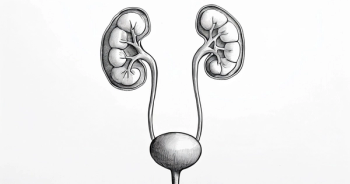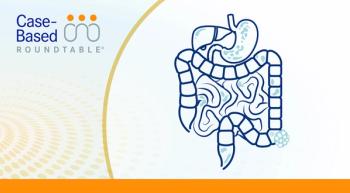
Mirvetuximab Active in Platinum-Sensitive Ovarian Cancer Regardless of HRD Status
New findings reveal mirvetuximab soravtansine significantly improves outcomes in patients with recurrent platinum-sensitive ovarian cancer, regardless of HRD status.
Final data from the phase 2 PICCOLO trial (NCT05041257) demonstrated substantial efficacy in patients with folate receptor alpha (FRα)-positive recurrent platinum-sensitive ovarian cancer (PSOC) treated with mirvetuximab soravtansine-gynx (Elahere), regardless of homologous recombination deficiency (HRD) status).1
These data, presented at the 2025 ESMO Gynecological Cancers Annual Congress, showed that at a median follow-up of 26.6 months, median progression-free survival (PFS) was 6.9 months (95% CI, 5.9-9.6) and median overall survival (OS) was 27.2 months (95% CI, 23.8 to not reached). In total, 79 patients received mirvetuximab soravtansine as third-line or greater treatment in patients with FRα-positive.
The PICCOLO trial, a global, open-label, single-arm study, enrolled 79 patients with FRα-positive recurrent PSOC who had received at least 2 prior lines of platinum-containing therapy. A previous analysis published in the Annals of Oncology in November 2024 showed that the primary end point of investigator-assessed objective response rate (ORR) was met, with a confirmed ORR of 51.9% (95% CI, 40.4%-63.3%). This included a complete response rate of 7.6% (n = 6) and a partial response rate of 44.3% (n = 35). Notably, 85.5% of patients with postbaseline tumor measurements showed a reduction in tumor volume.2
“While the efficacy of [mirvetuximab soravtansine] monotherapy has been studied (including a confirmatory trial) in patients with [platinum-resistant ovarian cancer (PROC)], the PICCOLO trial provides results from the first completed, phase 2 trial of [mirvetuximab soravtansine] monotherapy focused solely on patients with PSOC. This is of importance, given the distinguishing factors between PSOC and PROC patient populations,” Angeles Alvarez Secord, MD, MHSc, et al, wrote in the study. Secord is a gynecologic oncologist at Duke Cancer Center.
At this ESMO congress, findings were presented by Ana Oaknin, MD, head of the Gynecological Cancer Program at the Vall d'Hebron Institute of Oncology in Barcelona, Spain.1Of 38 patients with known tumor HRD status who enrolled onto the study, 19 (50%) were HRD-positive. Patients with HRD-positive and HRD-negative tumors had similar exposure to PARP inhibitors (84% vs 79%) and bevacizumab (Avastin; 68% vs 63%), and more patients with HRD-positive tumors had received > 3 prior lines of therapy (11% vs 5%) and had a recent platinum-free interval of > 12 months (63% vs 47%).
Compared with patients with HRD-negative tumors, patients with HRD-positive tumors had a numerically higher ORR (58% vs 42%), a shorter median duration of response (DOR; 5.80 vs 8.31 months), and similar median PFS (6.18 vs 6.90 months).
This suggests that mirvetuximab soravtansine’s benefit is not limited to a specific HRD subgroup; however, further information is still needed to identify a difference in efficacy in patients with and without prior exposure to PARP inhibitors.
Additional data previously published in the Annals of Oncology showed that a significant proportion of the study population had extensive prior treatments, including 81.0% (n = 64) who had received prior PARP inhibitor therapy and 64.6% (n = 51) who had received prior bevacizumab.2 Among patients with documented progressive disease (PD) while on or within 30 days of prior PARP inhibitor therapy (n = 59, 74.7% of all patients), the ORR was 45.8% (95% CI, 32.7%-59.2%). This is particularly relevant given the increasing use of PARP inhibitors in ovarian cancer management and the observed diminished efficacy of subsequent therapies following PARP inhibitor progression. For those without PD on prior PARP inhibitors, the ORR was 60.0% (n = 3/5; 95% CI, 14.7%-94.7%).
The efficacy also extended to other heavily pretreated subgroups:
- 55.1% ORR (n = 27/49) in patients with 1 or 2 prior lines of therapy.
- 50.0% ORR (n = 12/24) in those with 3 prior lines.
- 49.0% ORR (n = 25/51) in patients with prior bevacizumab exposure.
- 43.9% ORR (n = 18/41) in patients who had received both prior PARP inhibitor treatment and prior bevacizumab.









































